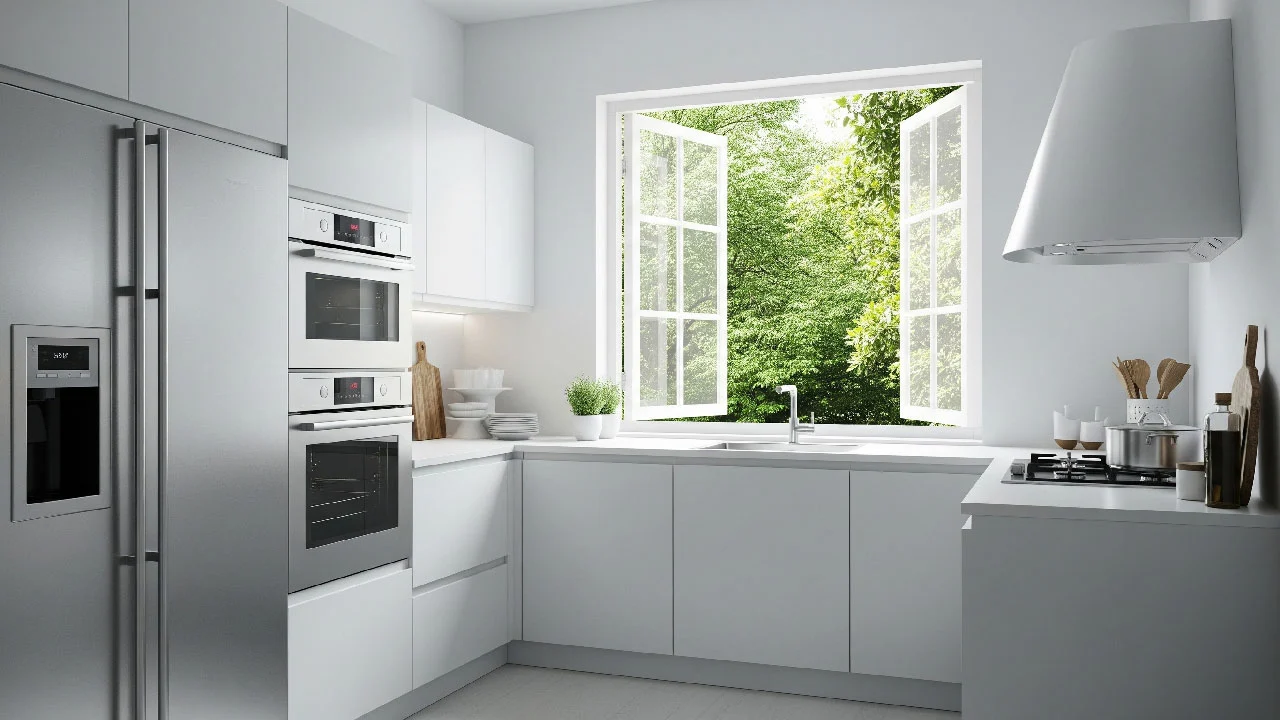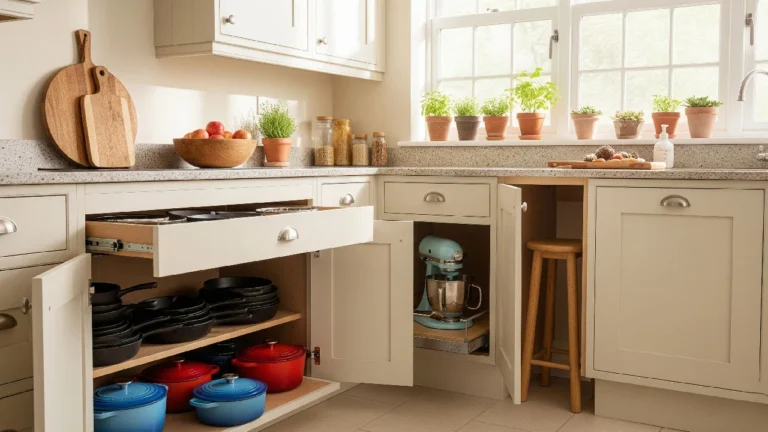How to Improve Ventilation in the Kitchen: Easy & Effective Tips
Cooking often makes the kitchen hot, smoky, and filled with odors. Without proper airflow, it can even cause damp walls and mold. The good news is — improving kitchen ventilation is easier than you think!

For a comfortable and healthy home, ensuring proper ventilation in the kitchen is a must. Without good airflow, the kitchen quickly becomes hot and stuffy due to stove heat, oil smoke, and steam. Poor ventilation traps odors, increases moisture, and even leads to mold on walls.
But the good news is — with the right ventilation system, your kitchen not only stays cooler but also remains odor-free, dry, and healthy.
In this blog, I’ll share some simple and effective ways to improve ventilation in the kitchen so you can cook in comfort every day.
Best Ways to Improve Ventilation in the Kitchen
Here are some practical tips to keep your kitchen cool, fresh, and well-ventilated:
1. Open Windows and Doors for Cross Ventilation
The easiest way to improve airflow is to keep the windows open while cooking. For better results, open a door or another window on the opposite side. This creates cross ventilation — fresh air comes in from one side and hot air escapes through the other. It instantly cools the kitchen and prevents odors from staying inside.
2. Use an Exhaust Fan
If you live in a small apartment or have a windowless kitchen, an exhaust fan works wonders. It pulls out smoke, steam, and heat directly outside. Keep it running for at least 15–20 minutes after cooking to clear the air and keep the space fresh.
3. Install a Range Hood or Chimney
For those who cook fried or oily dishes regularly, a kitchen hood (chimney) is the best solution. Placed just above the stove, it immediately sucks out smoke, grease, and hot air. A ducted range hood is especially effective for long-term freshness and is considered one of the best ways to improve ventilation in the kitchen.
4. Use a Portable Fan
Not everyone can install an exhaust fan or chimney. In that case, a small portable fan placed near a window can help push hot air outside. Though temporary, it’s a simple way to keep the kitchen cooler.
5. Keep Indoor Plants
Adding indoor plants not only makes the kitchen look beautiful but also improves air quality naturally. Plants like money plant, spider plant, or aloe vera act like air purifiers by absorbing toxins and keeping the environment fresh.
Importance of Ventilation in the Kitchen
Good airflow isn’t just about comfort — it protects your health and home too. Let’s see why:
- Controls Heat: Cooking generates a lot of heat from stoves, ovens, and microwaves. Ventilation prevents this heat from building up and spreading across the house.
- Removes Smoke & Odors: Frying and spicy dishes release strong smells. Without ventilation, the odor spreads to other rooms. Good airflow removes smoke and keeps the house smelling fresh.
- Reduces Moisture: Steam from rice, curries, and soups creates humidity, which leads to damp walls and mold. Ventilation keeps the kitchen dry and protects furniture and cabinets.
- Keeps the Kitchen Healthy: Cooking fumes often contain harmful gases like carbon monoxide and nitrogen dioxide. Proper ventilation removes these pollutants, keeping the air safe for your family.
Final Thoughts
Whether your kitchen is small or large, proper ventilation is essential. It’s not only about keeping the kitchen cool but also about making it safe, healthy, and comfortable.
So, whenever you cook, try to keep windows and doors open for natural airflow. If possible, install a range hood or at least a good exhaust fan. Even simple steps like using a portable fan or keeping indoor plants can make a big difference.
By following these tips, you’ll enjoy a fresh, cool, and healthy cooking environment every day.


